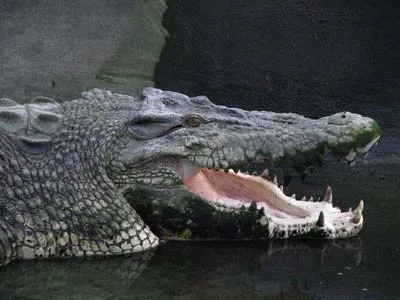Life in Odisha
In the state of Odisha, a tragic incident has highlighted the ongoing human-crocodile conflict that has become a pressing issue in recent years. A recent report reveals that a crocodile has claimed another human life, underscoring the escalating tensions between local communities and these formidable reptiles. This essay examines the factors contributing to this conflict, the impact on local communities, and potential measures to mitigate these dangerous encounters.
Table of Contents
Context of the Conflict
The human-crocodile conflict in Odisha is not a new phenomenon. The region’s rivers, estuaries, and wetlands provide an ideal habitat for crocodiles, particularly the saltwater and mugger crocodile species. As human settlements expand and encroach upon these natural habitats, encounters between humans and crocodiles have become increasingly common. These interactions often result in tragic consequences, as crocodiles, which are apex predators, react defensively when they feel threatened or when their territory is invaded.
Recent Incident
The most recent tragedy occurred in a rural area of Odisha, where a crocodile attacked and killed a local resident. This incident has shocked the community and reignited concerns about safety and the need for effective management strategies. The victim was reportedly in close proximity to a river, a common scenario for crocodile attacks. Such incidents highlight the urgent need to address the underlying causes of human-crocodile conflicts and to implement solutions that protect both people and wildlife.
Contributing Factors
Several factors contribute to the increasing frequency of crocodile attacks. One significant factor is habitat destruction. As human activities, such as agriculture and urbanization, encroach upon crocodile habitats, these reptiles are forced into closer contact with human settlements. Additionally, the depletion of natural prey sources may drive crocodiles to seek alternative food sources, including humans. Changes in water management practices, such as dam construction and irrigation projects, can also alter crocodile habitats, exacerbating conflicts.
Impact on Local Communities
The impact of crocodile attacks on local communities is profound. Beyond the immediate loss of life, these incidents create a climate of fear and insecurity among residents. Families affected by crocodile attacks often experience psychological trauma, and the loss of a loved one has lasting emotional and economic repercussions. Moreover, the fear of crocodile attacks can restrict local activities, such as fishing and bathing, which are vital to the daily lives and livelihoods of many residents.
Conservation and Safety Measures
Addressing the human-crocodile conflict requires a multifaceted approach that balances the conservation of crocodile populations with the safety and well-being of local communities. One effective strategy is the implementation of community-based conservation programs. These programs can involve local residents in monitoring crocodile populations, raising awareness about safety measures, and promoting coexistence strategies. Educating communities about crocodile behavior and safe practices can reduce the likelihood of dangerous encounters.
Habitat Management
Another crucial aspect of conflict mitigation is habitat management. Efforts to protect and restore crocodile habitats can help ensure that these reptiles have adequate space and resources, reducing the likelihood of encounters with humans. This can include the establishment of protected areas and the implementation of measures to minimize habitat disruption caused by human activities. Ensuring that crocodiles have access to suitable prey and natural environments can also help reduce their inclination to venture into human-populated areas.
Effective Response and Rescue
Rapid response and rescue efforts play a vital role in addressing crocodile attacks. When incidents occur, timely intervention by wildlife authorities can help manage the situation and prevent further attacks. This may involve capturing and relocating problem crocodiles or implementing temporary safety measures to protect local communities. Having a well-coordinated response plan in place can enhance the effectiveness of these efforts and ensure that appropriate measures are taken promptly.
Community Involvement
Engaging local communities in conservation and conflict mitigation efforts is essential. Communities living in crocodile habitats are often the first to encounter these reptiles and can provide valuable insights into their behavior and movements. By involving residents in monitoring programs and decision-making processes, conservation efforts can be more targeted and effective. Additionally, fostering a sense of stewardship among local communities can promote positive attitudes toward crocodile conservation and reduce the likelihood of conflicts.
Policy and Legislation
Government policies and legislation play a crucial role in addressing human-crocodile conflicts. Implementing and enforcing regulations that protect both crocodiles and human populations can help manage and mitigate conflicts. Policies may include restrictions on activities that disrupt crocodile habitats, guidelines for safe practices in crocodile-prone areas, and support for conservation initiatives. Effective law enforcement and collaboration between government agencies, conservation organizations, and local communities are key to successful implementation.
Conclusion
The recent crocodile attack in Odisha underscores the urgent need to address the human-crocodile conflict that has plagued the region. By understanding the contributing factors, impact on local communities, and potential solutions, we can work towards creating a safer coexistence between humans and crocodiles. Implementing comprehensive conservation strategies, habitat management practices, and community involvement is essential to reducing the frequency of these tragic encounters. Through collaborative efforts and effective measures, it is possible to protect both human lives and crocodile populations, ensuring a harmonious balance between people and wildlife.








